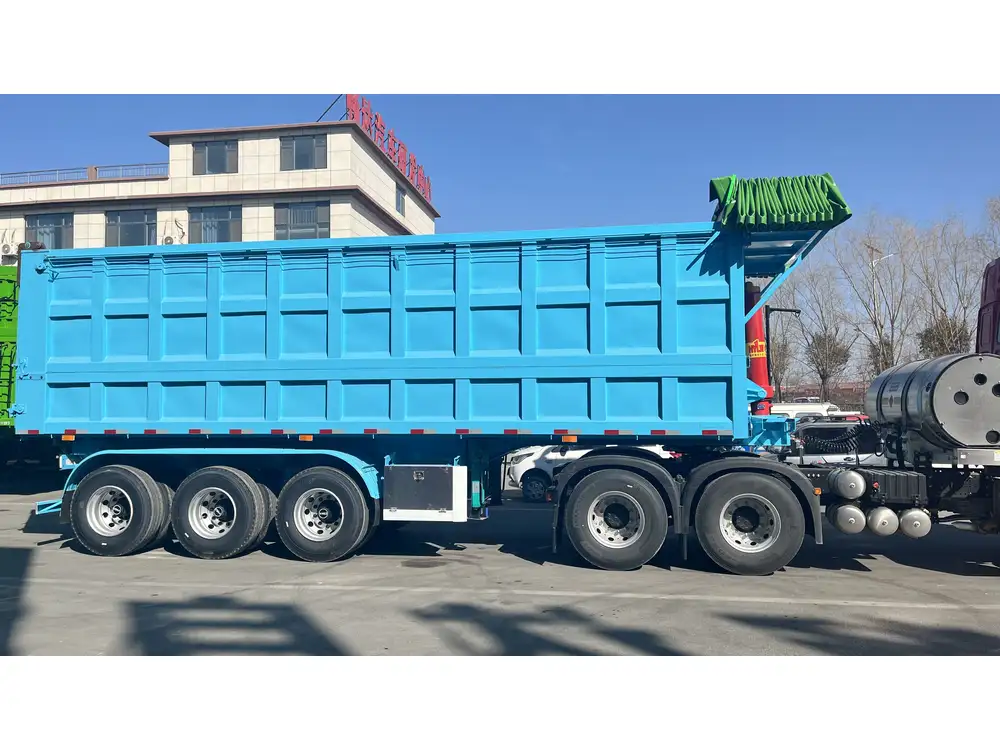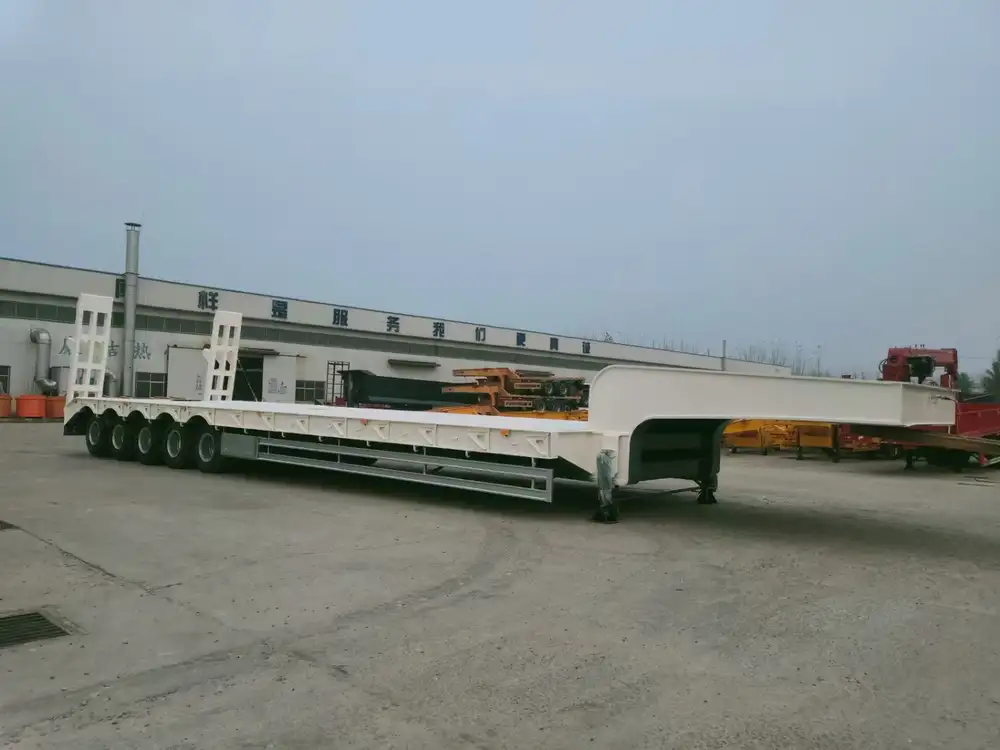When it comes to understanding the structure of a semi-trailer, one of the fundamental aspects that deserve attention is the axle configuration. Axles are essential components that significantly influence a semi-trailer’s performance, weight distribution, load capacity, and overall stability. In this detailed guide, we will delve into the intricacies of semi-trailer axles, addressing crucial questions such as “How many axles does a semi-trailer have?” and exploring the various configurations, benefits, and considerations associated with each type.
Understanding Semi-Trailer Axles: An Overview
Semi-trailers are equipped with multiple axles to support their weight and ensure safe transportation of goods. Generally, a single semi-trailer may have anywhere from one to five axles. This range is influenced by various factors, including payload capacity requirements, state regulations, and overall design specifications.
| Axle Configuration | Number of Axles | Typical Applications |
|---|---|---|
| Single Axle | 1 | Lightweight cargo |
| Tandem Axles | 2 | Standard freight and logistics |
| Tri-Axles | 3 | Heavy loads, specialized equipment |
| Quad Axles | 4 | Maximum payload distribution |
| 5-Axles | 5 | Specialized trailers for oversized loads |
Why Axle Count Matters
The axle count of a semi-trailer directly impacts several critical factors:
- Load Capacity: More axles enhance the trailer’s ability to distribute heavier loads without risking structural integrity.
- Stability and Handling: An increased number of axles can improve stability, especially during turns or when carrying a high center of gravity.
- Legal Regulations: Different jurisdictions have specific regulations regarding maximum permissible weights per axle. Understanding these regulations can prevent fines and enhance road safety.
- Tire Wear and Maintenance: With additional axles, the load is dispersed across a larger area, potentially reducing tire wear and maintenance costs.

Exploring Different Axle Configurations
1. Single Axle Trailers
Description: Typically used for transporting lighter loads, single axle trailers support a maximum payload capacity that varies based on the specific design and manufacturer.
Advantages:
- Lower purchase and maintenance costs.
- Easier maneuverability in tight spaces.
Disadvantages:
- Limited load capacity.
- Less stability compared to multi-axle configurations.
2. Tandem Axle Trailers
Description: The most common configuration for semi-trailers, these designs feature two axles positioned closely together. They provide a balanced load distribution and minimize the risk of structural failure.
Advantages:
- Increased load capacity (up to 34,000 pounds for the axles alone).
- Enhanced stability, making them ideal for long-distance hauls.
Disadvantages:
- Requires appropriate space for turning.
- A heavier setup can lead to stricter compliance with state regulations.

3. Tri-Axle Trailers
Description: Featuring three axles, tri-axle trailers are particularly favored for transporting heavier materials and equipment.
Advantages:
- Superior load distribution capabilities and increased weight capacity, often exceeding 40,000 pounds.
- Better road compliance for heavier loads.
Disadvantages:
- May require larger turning radii, making them less maneuverable in urban settings.
- Higher maintenance costs due to the additional axles.
4. Quad Axle Trailers
Description: Quad axle trailers are equipped with four axles, providing substantial load distribution ideal for extremely heavy or oversized cargo.
Advantages:
- Maximizes payload without exceeding weight limits.
- Superior stability, especially on rough terrains.
Disadvantages:
- More complex maintenance needs due to multiple axles.
- Higher initial purchase and operational costs.
5. Five-Axle Trailers
Description: These configurations cater to specialized transportation needs, particularly suited for the heaviest loads or longer cargo.
Advantages:
- Allows for maximal weight distribution, adhering to DOT regulations.
- Often used for transporting oversized loads, ensuring road safety.
Disadvantages:
- Limited availability and potentially higher costs.
- Heavy and bulky, making navigation in tight or congested areas challenging.

Factors Influencing the Choice of Axle Configuration
When selecting a semi-trailer axle configuration, consider the following factors:
1. Load Type and Weight
Different payloads require specific axle configurations to maintain balance and adhere to safety standards. Understanding the nature of the cargo — whether it is dense and heavy or expansive and lighter — plays a significant role in determining the appropriate axle count.
2. Regulatory Compliance
Each state or country may enforce unique weight restrictions on axles. It is critical for manufacturers and operators to understand these regulations. Noncompliance can result in hefty fines or restrictions on operational capabilities.

3. Terrain
If operating in mountainous or rural areas, choosing a configuration that enhances stability and load stability, such as a tri-axle setup, will significantly benefit operational efficiency and safety.
4. Budget and Economics
While a higher number of axles can provide better load capacity and stability, it comes at a cost. Evaluating the initial investment as well as ongoing maintenance fees is crucial in determining which axle configuration fits the budgetary constraints while still meeting operational needs.
Making an Informed Decision

Checklist for Axle Selection
When deciding on the appropriate axle configuration for your semi-trailer, consider the following checklist to ensure you’re making an informed choice:
- Assess Your Load Requirement: What is the average weight of the loads you’ll be transporting?
- Examine State and Local Regulations: Are there any relevant weight limits you need to comply with?
- Evaluate Terrain Conditions: Will you be frequenting areas with challenging terrains?
- Set a Budget: What is your budget for initial purchase and ongoing maintenance?
- Determine Usage Patterns: Will the trailer be used for long hauls or short trips?
Conclusion
Understanding how many axles a semi-trailer should have goes beyond mere numbers; it is a pivotal element in ensuring safe, compliant, and efficient operations. The choice between single, tandem, tri-axle, quad, or five-axle configurations hinges on the load type, regulatory requirements, landscape, and budget constraints. By paying careful attention to these factors, manufacturers can optimize their semi-trailer designs to meet varying operational demands while maximizing payload capacity and safety on the road.
In a market where efficiency and compliance govern operational success, selecting the correct axle configuration can result in tangible benefits, ensuring that manufacturers remain competitive while prioritizing safety and reliability. By equipping themselves with the right knowledge about how many axles a semi-trailer should have, stakeholders in the transportation industry can navigate the complexities of trailer design with confidence.



